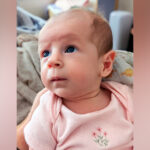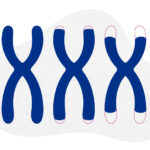Orphan diseases: Bringing academia, industry, and government into the game

“If you build it, he will come,” the ghosts of baseball players past tell a farmer in Field of Dreams. But it’s not that easy. To put people in the seats you have to have all of the right pieces: the right team, including players and managers; the right park, one that works for both the team and the fans; and a passion for being the best at the game.
In the field of rare diseases, not only are institutions like Children’s Hospital Boston stepping up to the plate, but industry and government are joining the game, bringing expertise, guidance and infrastructure. Together, they’re starting to turn basic biomedical discoveries – many made possible only through dedicated patients and their families – into lifesaving treatments.
The shape of the game came into clear view last week at the 2nd Annual Rare Disease Symposium at Children’s. This daylong event, hosted by Children’s Technology Innovation & Development Office (TIDO) and the Manton Center for Orphan Disease Research, united scientists, clinicians, regulators, funders and industry. It showcased not only the depth of the team Children’s has fielded for orphan disease work, but also facilities and support available through industrial and governmental partners to conduct translational research on orphan diseases.
Without a doubt, the word of the day was genomes. Each researcher who took the stage showed how our growing understanding of the genome has brought us to the cusp of truly changing the care of children and adults with orphan diseases, from rare anemias to iron deficiencies, brain tumors to cardiomyopathies.
So what do we need bring the revolution about, to translate that unifying theme into benefits at the bedside? According to the panelists and presenters, it takes:
- Technologies for sequencing disease genomes, and for interpreting what those sequences mean.
- Good models of disease, in systems like induced pluripotent stem (iPS) cells or zebrafish.
- The ability to connect that genomic information to patients’ physiology and clinical data, an effort that Children’s will expand next year with a new, hospital-wide biorepository (stay tuned).
- Clinical experience to recognize subtle differences in biology that could help uncover variations in disease and which could provide further insight into genetics and, ideally, treatment.
- Expertise and support (financial, institutional, regulatory, etc.) to traverse the “valley of death” – the preclinical and early clinical studies where most new treatments fail – and follow the path all the way to FDA approval.
- Above all, patients and families who are motivated to participate in research and help make life better, if not for themselves then for others struggling with the same rare diseases.
It was clear from the day’s roster of speakers is that all of those components are here, now. And they’re already bringing new hope to patients with diseases long thought to be untreatable.
Fewer than 200 of the 6,000 known rare or orphan diseases can currently be treated pharmaceutically. Which means that right now we’re batting under .033.
Take cognitive or behavioral impairments like Rett syndrome or Fragile X. David Margulies, new leader of the hospital’s nascent Gene Partnership, noted that some 60 to 70 percent of conditions linked to the X chromosome can now be traced to specific gene mutations, linking intellectual development to biology and creating new, hitherto undreamed of opportunities for actually reversing them.
Or congenital myopathies. As the Manton Center’s Alan Beggs pointed out, we have the animal models and the genetics worked out for many of these muscle weakness diseases. What is needed most now is preclinical compound development and testing – activities for which industry is much better suited than academia, and for which new partnerships are the key.
The need for those partnerships is real. As a speaker from the NIH noted, fewer than 200 of the 6,000 known rare or orphan diseases can currently be treated pharmaceutically. Which means that right now we’re batting under .033.
But if the questions asked during the symposium and the lunchtime conversations are any indication, everyone in the room saw the need to work together as a team. I think the general feeling at the end of the day could be summed up like this: The players are on the field, the crowd is in the stands, the game is on, let’s put some runs on the scoreboard. To which I say: Play ball!
Related Posts :
-

A case for Kennedy — and for rapid genomic testing in every NICU
Kennedy was born in August 2025 after what her parents, John and Diana, describe as an uneventful pregnancy. Soon after delivery, ...
-

The journey to a treatment for hereditary spastic paraplegia
In 2016, Darius Ebrahimi-Fakhari, MD, PhD, then a neurology fellow at Boston Children’s Hospital, met two little girls with spasticity ...
-

New research paves the way to a better understanding of telomeres
Much the way the caps on the ends of a shoelace prevent it from fraying, telomeres — regions of repetitive DNA ...
-

New research sheds light on the genetic roots of amblyopia
For decades, amblyopia has been considered a disorder primarily caused by abnormal visual experiences early in life. But new research ...





